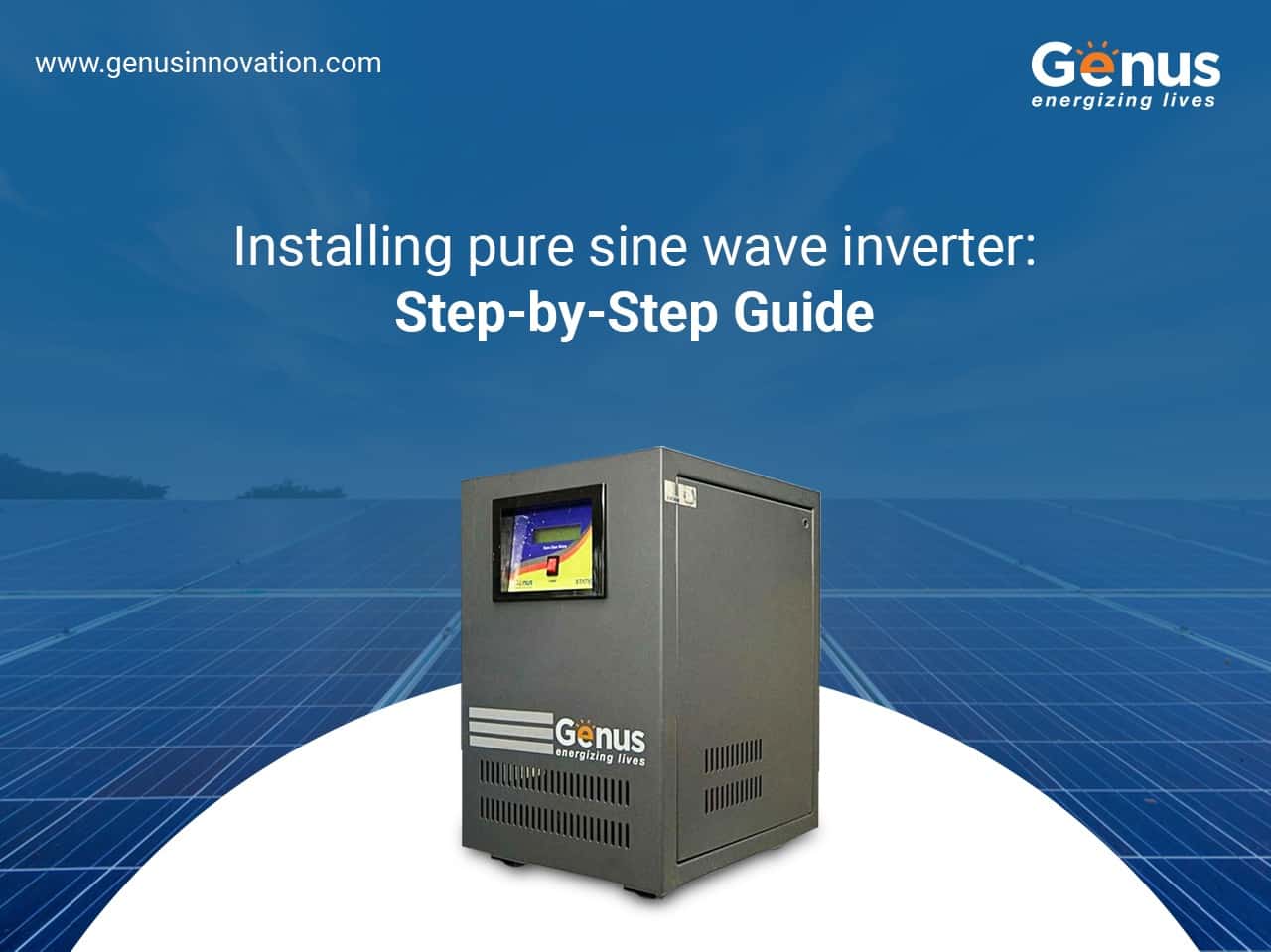Are you planning to purchase an inverter for your home but concerned about the hassle of installation? It might come as a pleasant surprise that you can install it yourself. By doing so, not only can you avoid the extra labor costs, but you’ll also sidestep potential installation pitfalls.
If you’re eager to learn how to install a sine wave inverter at home, keep reading until the end to understand what a pure sine wave inverter is and how to proceed with the installation. Just remember to adhere to the guidelines provided in the installation manual.

## What Is A Pure Sine Wave Inverter?
A pure sine wave inverter is a device that converts direct current (DC) into alternating current (AC), and vice versa when necessary. This conversion ensures that your appliances receive high-quality electrical current similar to what utility companies provide.
If you’ve been researching solar products for home use, you may already be familiar with the three primary components: batteries, an alternator, and a sine wave inverter. There are two main types of inverter technology: pure sine wave and modified sine wave. Pure sine wave inverters tend to be more costly than their modified counterparts.
These inverters are built using high-quality electronics and offer superior efficiency. They deliver electric current with the same characteristics as utility-provided electricity, which helps prevent damage from overheating. In contrast, modified sine wave inverters are less expensive but less efficient and can’t operate all types of appliances. Additionally, pure sine wave inverters are also transformers.
Now that you understand what a pure sine wave inverter is, let’s move on to the installation process.
## Pure Sine Wave Inverter Installation
Ensuring continuous power supply during outages is no longer a luxury but a necessity. Installing a sine wave inverter is crucial for establishing an alternative energy source.
Inverters are sensitive to environmental factors such as temperature, moisture, and airborne contaminants. For optimal performance, install the inverter in a cool, clean, and dry location with adequate ventilation.
Here’s a step-by-step guide to installing an inverter at home:
### Step 1: Planning Your Installation
The initial step involves mapping out the entire area where the inverter will be installed. Consider the placement of the inverter unit and auxiliary switches. Ensure the shortest possible path between the inverter and the battery system to maximize battery efficiency. Preparing a checklist of tasks and gathering all necessary materials and tools ahead of time can be beneficial.
### Step 2: Installing a Fuse Holder and Routing Cables
Next, install a fuse holder and route the cables. Protect the battery wiring with an appropriately sized fuse, located within 18 inches of the batteries. Ideally, professional installation should be considered at the ends of the inverter since these areas carry substantial current. Use proper crimping tools or consult a professional electrician for assistance. Thread the cables through newly cut holes in the inverter and ensure the cable ends are covered with rubber boots. Both electricians and do-it-yourself enthusiasts can refer to installation manuals for guidance.
### Step 3: Mounting the Inverter Securely
Proper mounting is just as essential as choosing the right inverter for your home. Once you’ve identified the ideal location, secure the inverter firmly. During installation, ensure that the DC cables and inverter face are easily accessible for wiring. Lock the wheels of the inverter case during installation. After installation, verify that all wires and cables are correctly attached to the inverter. Finally, install a protective shield around the inverter without obstructing the ventilation system.
### Step 4: Connecting the Battery to the Inverter
To connect the battery to the inverter, link each terminal of the inverter to the corresponding terminals of the battery. Upon connection, the inverter should immediately receive power.
That’s all there is to installing a pure sine wave inverter at home. With this knowledge, you can confidently purchase an inverter without worrying about the installation process.
For top-tier inverters, consider Genus Innovation’s range of products. Connect with us today to explore our premium power backup solutions.
Ceramic Bathroom Accessory Sets
Ceramic Bathroom Accessory Sets,Blue Bathing Set Ceramic Bottle,Brown Bathing Set Ceramic Bottle,Green Bathing Set Ceramic Bottle
MingHui Houseware Company Limited , https://www.minghuihousewareltd.com